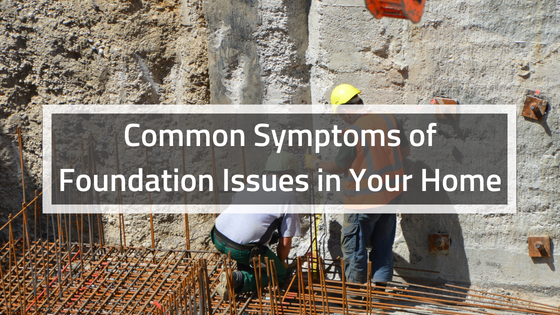Whether you already own or are planning on buying a home in the Greater Houston area, owning a piece of property can be an exciting experience, particularly for a first-time homebuyer. But as exciting as it may seem, knowing how to identify specific problems that could jeopardize the structural integrity of your home in the future can help you save a lot of money in the long run. Conversely, failing to recognize certain issues could end up costing you more than what you’ve planned to spend on home maintenance or renovation. For instance, even a small issue, like a tiny wall crack, plumbing leak, or uneven floors, can quickly turn into a serious problem that may cost a lot of money to fix.
Regardless of the type of home you already purchased or wish to buy, the overall condition of its foundation is one of the elements that will indicate how sound the home truly is. There are two ways to go about finding out whether the foundation is in good condition or if it needs repairs: you could ask the seller or look for any symptoms that may indicate foundation distress. If you decide to examine the foundation yourself, checking both the interior and exterior of the home is imperative in order to detect potential foundation problems.
The Warning Signs of Foundation Damage
When checking a foundation for damage, there are two different areas that you’ll need to inspect: the interior and exterior of the home.
First, note that every foundation will settle slightly over time. Most homes reflect that settlement, and homeowners are often able to see it in a series of hairline cracks developing across walls and ceilings. However, cracks that are getting wider and/or longer over time along with some other issues occurring throughout a home may signal that foundation problems are getting worse.
To help you identify foundation problems before it’s too late, we have divided the signs of foundation damage into two main categories, as follows:
1. Interior Signs of Foundation Damage
The most common interior signs of foundation damage include:
- Misaligned windows and doors – Windows and doors that are misaligned often get stuck, which means that you cannot open and close them properly. While misaligned windows and doors can signal other structural issues, they’re often caused by differential settlement.
- Cracks in the floor – Tile, wood, and laminate flooring tends to reflect any cracks that compromise the structural integrity of the slab and/or foundation underneath. But if the floor is covered by carpet, you might have a hard time detecting a slab crack.
- Uneven, soft, bouncy floors – When you walk across a room, and your floor seems uneven, feels oddly bouncy, or has any soft spots, the problem may be caused by deteriorating floor structure and/or foundation damage.
- Cracks in drywall – While drywall cracks can be caused by different issues, including sudden changes in atmospheric temperature and humidity levels, they could also be an indication of foundation problems.
- Cabinets, countertops, and moldings pulling away from walls – In a home whose foundation settles in an uneven fashion, specific elements, such as cabinets, countertops, and moldings, can separate from the walls, particularly on corners, where they usually meet.
2. Exterior Signs of Foundation Damage
Here are the most common exterior signs of potential foundation problems:
- Exterior elements separating from the home – If you see any exterior elements, such as the garage, stairs, patio, and/or chimney, separating or tilting away from the home, foundation damage could be the culprit.
- Bowing walls – Bowing walls typically occur after prolonged or heavy rains, so they usually indicate poor drainage around the foundation.
- Visible damage to the foundation – Concrete cracks, spalling, crumbling, or anything else that may affect the exterior of the foundation are a few more signs pointing to foundation distress.
When inspecting a house for foundation problems, one thing to remember is that diagonal or stair-step cracks in walls are the most common signs of foundation damage. Whether you observe these types of cracks or other problems, or you just suspect foundation damage, you should require a professional foundation inspection before you invest your hard-earned money in a piece of property. Since the main role of a foundation inspection is to uncover the problems that have already affected or could affect the foundation and home in the future, skipping the inspection may result in serious foundation issues that may cost you a great deal of money down the line.

